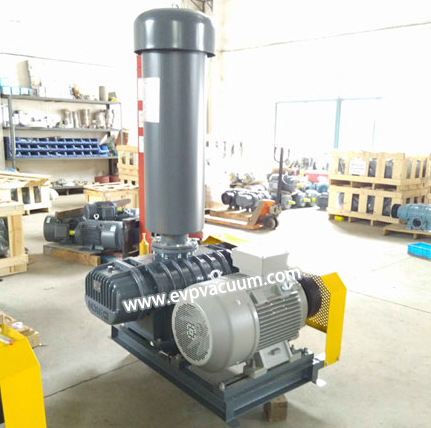Roots blower for tea and soft drink manufacturing wastewater treatment
With the improvement of living standards, the beverage industry has developed rapidly and has become an important part of China’s national economy. The waste water of tea beverage manufacturing refers to the production of tea waste produced by soaking the tea with water, extracting, filtering and clarifying, or adding water, sugar liquid, sour agent, edible flavor, juice or plant extract to the tea soup, and how to deal with this kind of wastewater is a problem we need to face. How to use roots blower in this wastewater process and what advantages does roots blower have?
1、 Tea making wastewater of characteristics
(1) It is difficult to treat the wastewater from tea production because of its high concentration of organic matter and high chroma.
(2) According to the production process of tea making, the composition of wastewater is basically the same as the water-soluble components of tea, among which organic acids, sugars, amino acids and pectin can be biochemical better.
(3) The content of tea polyphenols in wastewater is high, which has a strong inhibitory effect on bacteria.
2、 Tea making wastewater of treatment
The following processes are adopted in the scheme design of wastewater treatment:
(1) pretreatment process
Tea polyphenols have a strong inhibitory effect on microorganisms. Therefore, it is very important to choose the pretreatment process of wastewater. Whether the tea polyphenols are removed effectively or not plays a decisive role in the subsequent biochemical treatment. Considering the current situation of the enterprise and the operation cost of the process in the future, it is suggested that the removal of tea polyphenols should be carried out by flocculation sedimentation. On the one hand, it can remove the tea polyphenols in the wastewater, on the other hand, it can remove the colloidal and micro suspended organic and inorganic substances in the water by flocculation and sedimentation, which can reduce the SS and COD in the water, and provide conditions for the subsequent biochemical treatment.
(2) biochemical treatment process
The concentration of organic matter in tea polyphenol production wastewater is very high, and the CODcr value is 22000 mg / L, which belongs to high concentration organic wastewater. According to the characteristics of wastewater, the wastewater enters the anaerobic tank after pretreatment, and anaerobic digestion is carried out under strict anaerobic conditions to reduce the concentration of organic matter. Anaerobic reaction has good adaptability and treatment effect for wastewater with high CODcr value. After anaerobic reaction, the CODcr value of wastewater will be significantly reduced, which lays the foundation for the subsequent aerobic treatment. After the anaerobic process, the effluent flows into the aerobic tank (where roots blower is used for aeration), and the CODcr value of the wastewater is further reduced through aerobic biochemical action to ensure stable discharge.
3、 Tea manufacturing wastewater treatment of process flow chart
The waste water flows into the grid channel by itself through the pipe network. The grid channel is a structure that intercepts the large pieces of dirt (tea residue, etc.) in the waste water to prevent it from blocking the pump or process pipeline of the follow-up unit.
The effluent from the grid channel flows into the regulating tank by itself. Due to the high content of organic matter in the wastewater, it is easy to rot and deteriorate. Therefore, aeration and mixing system is set in the regulating tank to prevent the deterioration of wastewater. The wastewater is homogenized in the regulating tank and then lifted to the coagulation reaction tank by the lifting pump.
In the coagulation reaction tank, Ca (OH) 2, PAC and PAM are added respectively. By adding Ca (OH) 2, on the one hand, pH value can be adjusted between 6 ~ 8, on the other hand, calcium ion reacts with tea polyphenols to form insoluble compounds, which can reduce the content of tea polyphenols in wastewater; Adding PAC, on the one hand, aluminum ions can form insoluble substances with tea polyphenols; on the other hand, it can remove colloidal and micro suspended organic and inorganic substances in water by flocculation, which reduces the subsequent biochemical treatment load.
The effluent from the coagulation reaction tank flows into the sedimentation tank for solid-liquid separation, and the supernatant flows into the intermediate tank, and the sediment is discharged into the sludge tank.
4、 Roots blower of wonderful use and advantages
In the biochemical treatment process, it is necessary to build an aerobic tank, in which a blower is used for aeration. Why does roots wind become the mainstream fan in the blower industry?
Its advantages include:
1. For the three blade impeller, the rotation speed is increased by 3%, and the outlet pressure is high
2. Small volume and structure, simple maintenance and energy saving of 10%
3. Using double oil tank design, bearing lubrication is more thorough
4. Long service life


